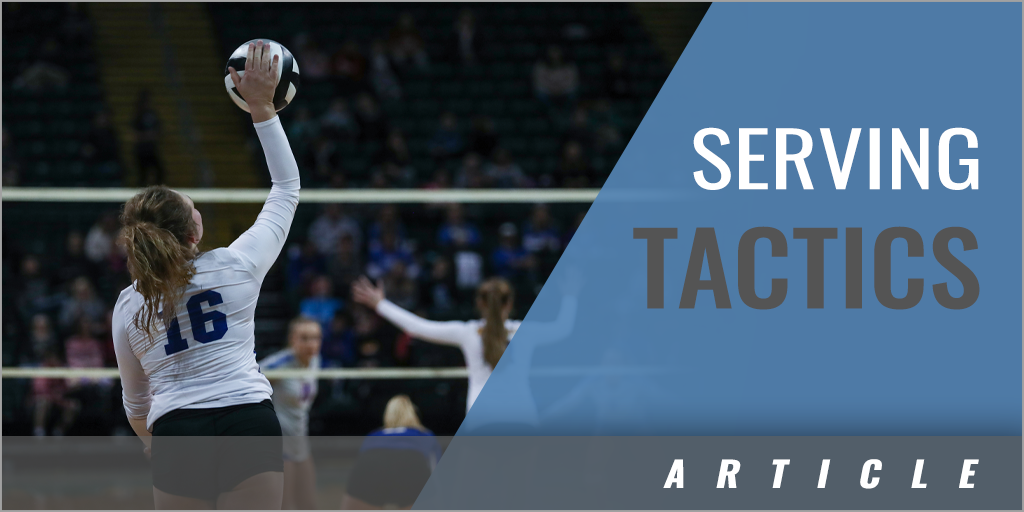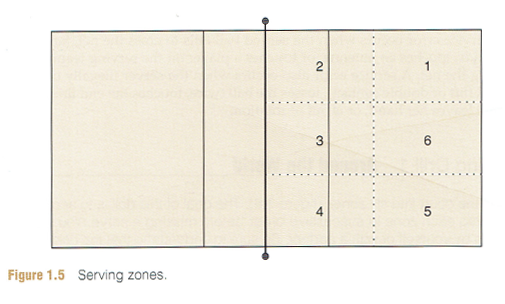|
By: Becky Schmidt - Hope College Originally Published in: Volleyball: Steps to Success Provided by: Human Kinetics Serving to different locations on the court can challenge your opponent and put your defense at an advantage. For beginning players, specific locations may also be easier to hit, leading to more consistent serves. Each player must weigh the risk-reward trade-off when choosing where to serve. It is also advantageous to keep the trajectory of the serve as flat as possible. A higher or more arched trajectory gives the passer more time to get to the ball and get on balance. When the serve is flat, it reduces the time and can catch the opponent off-balance. Because it is also more difficult for passers to track a ball coming at them (versus traveling across their visual field), a ball served directly at the opponent's shoulders can be challenging to pass. If you see that the passers are closer to the 10-foot (3 m) line than the end line when they are waiting for the serve, serve a fast, flat, and deep ball at their shoulders and force them to move backward to pass. Serving Accuracy Getting your serve in bounds is important, but it is also valuable to serve to specific locations on the court. Serving to specific zones can put your team in a position to score by serving to a particularly poor passer, making a strong hitter think about passing before attacking, or by simply putting people in the way of approaching hitters. Serving zones are identified in the same way as serving order. Zone 1 is in the opponent's right-back position, zone 6 is in the middle-back position, and zone 5 is in the left-back position (figure 1.5). A coach or teammate might signal a server to serve to a particular zone number by showing the corresponding number of fingers. Zone 6 is typically signaled with a fist.
Serving Short Typically, teams will serve short if they have pulled a front-row player back into a serve-receive pattern, have exposed an open area of the court, or want to put a player passing the serve in the way of a quick hitter's approach pattern. To serve short, use a float serve and a lighter contact to give the ball enough of an arc to get over the net but not enough power to go deep in the court. Risk vs. Reward You don't want to serve so softly that the opponent is able to easily pass the ball and run their offense, but you don't want to serve so aggressively that you can't control the ball and keep it in play. Here are situations that would lead to being more conservative:
When your opponents are likely to win the rally because of a very good hitter in the front row, it is better to be more aggressive than cautious. They will probably win the rally anyway, so you might as well hope for an ace! |








